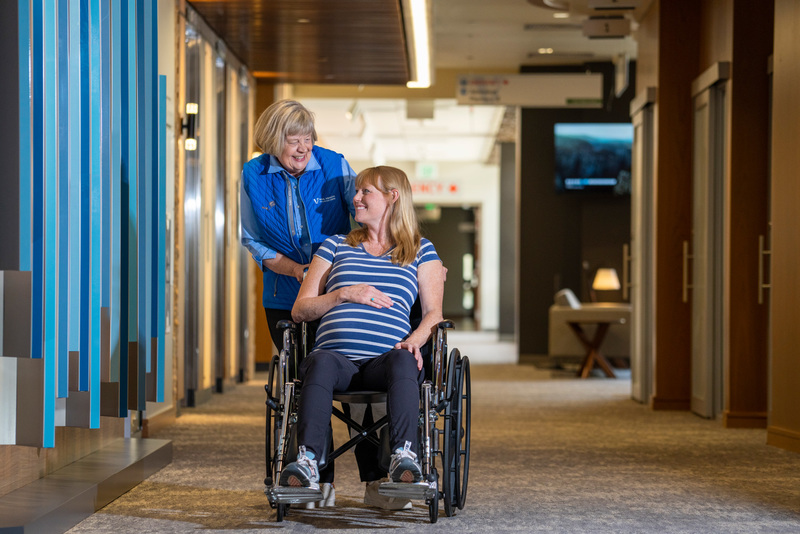News
How Giving Can Fill Your Heart & Increase Longevity

February is Heart Health Month, and while there are a myriad of ways to take care of your heart, charity is one of the lesser-known ways to lower blood pressure, improve mood and increase longevity. Whether you give your time, money or effort, charitable giving delivers powerful physical and emotional benefits, and of course it helps others in need.
“When we give, we look beyond ourselves to what might benefit others,” said Paige Baker-Braxton, PsyD, Director of Outpatient Behavioral Health for Vail Health. “By reframing our wants and needs and focusing on others, we open our hearts and practice empathy.”
According to the Charities Aid Foundation’s (CAF) World Giving Index of 2022, in the United States, while money is the most common form of charitable donation, it is not the highest form. With 61% of people in the United States donating financially to a charity, 80% helped a stranger, and 37% volunteered their time or services. Across the globe, helping a stranger reached its highest recorded level in 2021, with three out of five (62%) adults helping someone they didn’t know, up from 55% in 2020, according to the study. This equates to 3.5 billion people, compared to almost three billion in 2020, and represents the highest ever global score across any of the three measures recorded in the CAF World Giving Index.
Physical Benefits
From reducing stress to lowering blood pressure and improving mood, as well as increasing longevity, acts of giving - both financial and of your time - have multiple physical and emotional benefits.
Studies have shown that when helping someone else or giving a gift, the body secretes three key chemicals: serotonin, a mood regulator; dopamine, which provides a sense of pleasure; and oxytocin, which creates a sense of connection with others.
“Generosity actually triggers the release of pleasure and satisfaction hormones in your body, resulting in the potential for improved mood, improved motivation, and even reduced pain. The effects of giving can absolutely have a positive impact on our overall health and wellbeing,” said Baker-Braxton.
Additionally, giving can lower your blood pressure, protecting your heart and providing similar results as those of a healthy diet and exercise. One study found that on days people volunteered their time, they had lower levels of cortisol, resulting in reduced stress.
Volunteering your time may also lead to a longer lifespan. A study among elderly residents in California showed that those who volunteered regularly had a 63% lower mortality than non-volunteers.
Stacy Smith, LPC, a new therapist on the Summit County Vail Health Behavioral Health team, has been participating in community volunteerism for decades. When asked about the impact of giving on her mental health, she shared, “As the founder of Club Forget Me Not, a program for grieving children and their caregivers, I have had the privilege of giving both my time and resources to our community. My volunteerism not only serves my community but also serves me - I have a deep sense of community, fulfillment, and hopefulness.”
As a thriving nonprofit community healthcare system, Vail Health relies on the generosity of benefactors to remain independent and deliver its mission. Vail Health Foundation fundraises for Vail Health, Eagle Valley Behavioral Health (EVBH), and our affiliated entities. It Takes A Valley: Transforming Behavioral Health is a $100 million campaign led by Vail Health Foundation to revolutionize the Eagle River Valley’s behavioral health system and develop a model that can be replicated in other communities.
“We extend our heartfelt gratitude to each and every benefactor for their unwavering support. Every contribution, regardless of its size, is deeply appreciated and plays a crucial role in our mission," said Dan Pennington, Chief Philanthropy Officer at Vail Health Foundation.
More News
-
New!
More

Keeping the Peace This Holiday Season: Tools for Handling Tense Moments With Care
Holidays may be joyous, but they often come with awkward moments, family dysfunction and difficult conversations.
-
More

First Chair to Last Call: What Does Alcohol Really Mean For Your Health?
In nearly every Colorado ski town, some iteration of the neon sign blares its play-hard-party-harder anthem. It’s a not-so-subtle nod to mountain party culture, a lifestyle that normalizes combining sports and outdoor adventures with heavy drinking and partying. In Eagle County, après culture, high-altitude living and outdoor performance have coexisted for as long as locals have been sliding on snow. But how much is too much at altitude? And what role do social support systems play in helping residents find balance?
-
More

Counting More Than Steps: How Wearables Can Help (or Hinder) Your Health
From step counts to sleep stages, heart rate variability to blood sugar spikes, wearable devices are giving us a front-row seat to what’s happening inside our bodies. Strapped to wrists, slipped onto fingers or wrapped around our biceps, wearables like the Oura Ring or Whoop strap promise insight and advice in the quest for better health.





